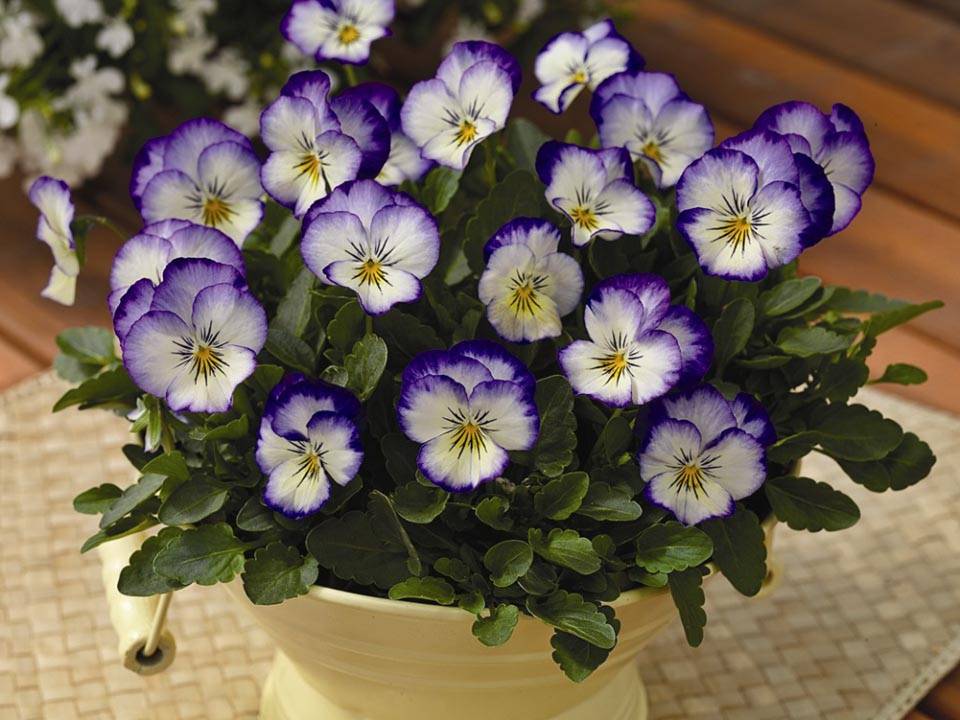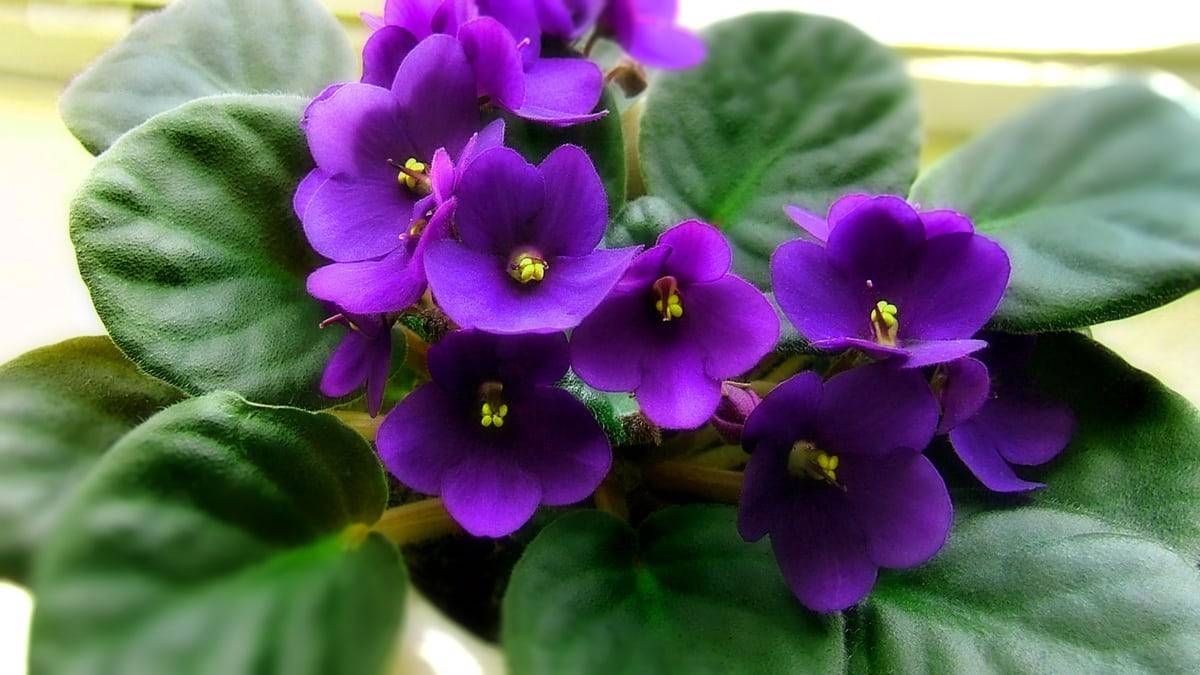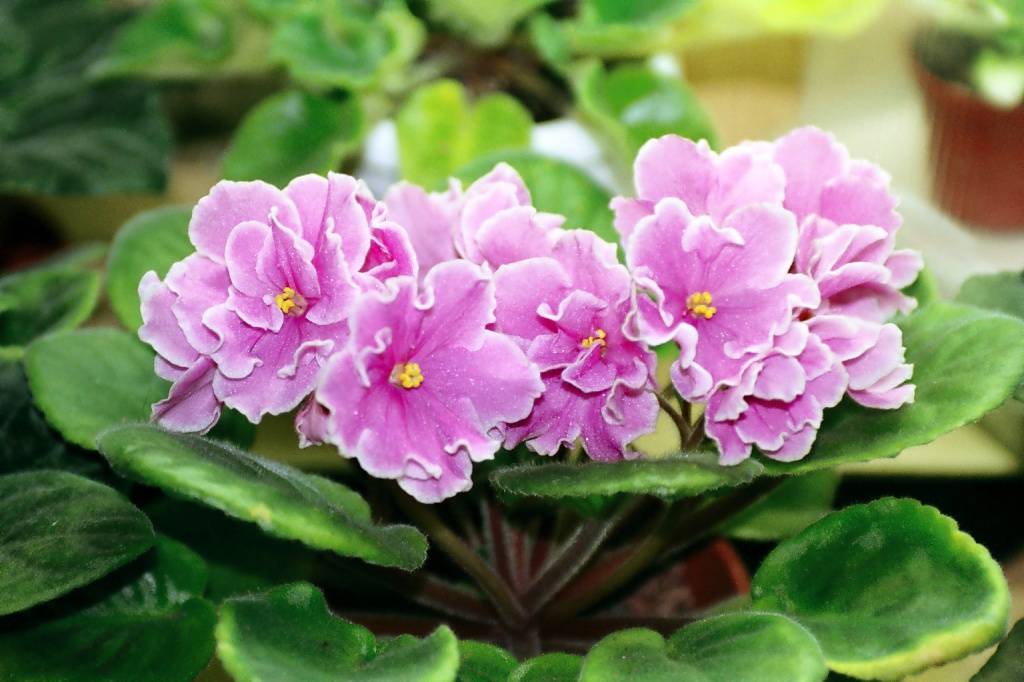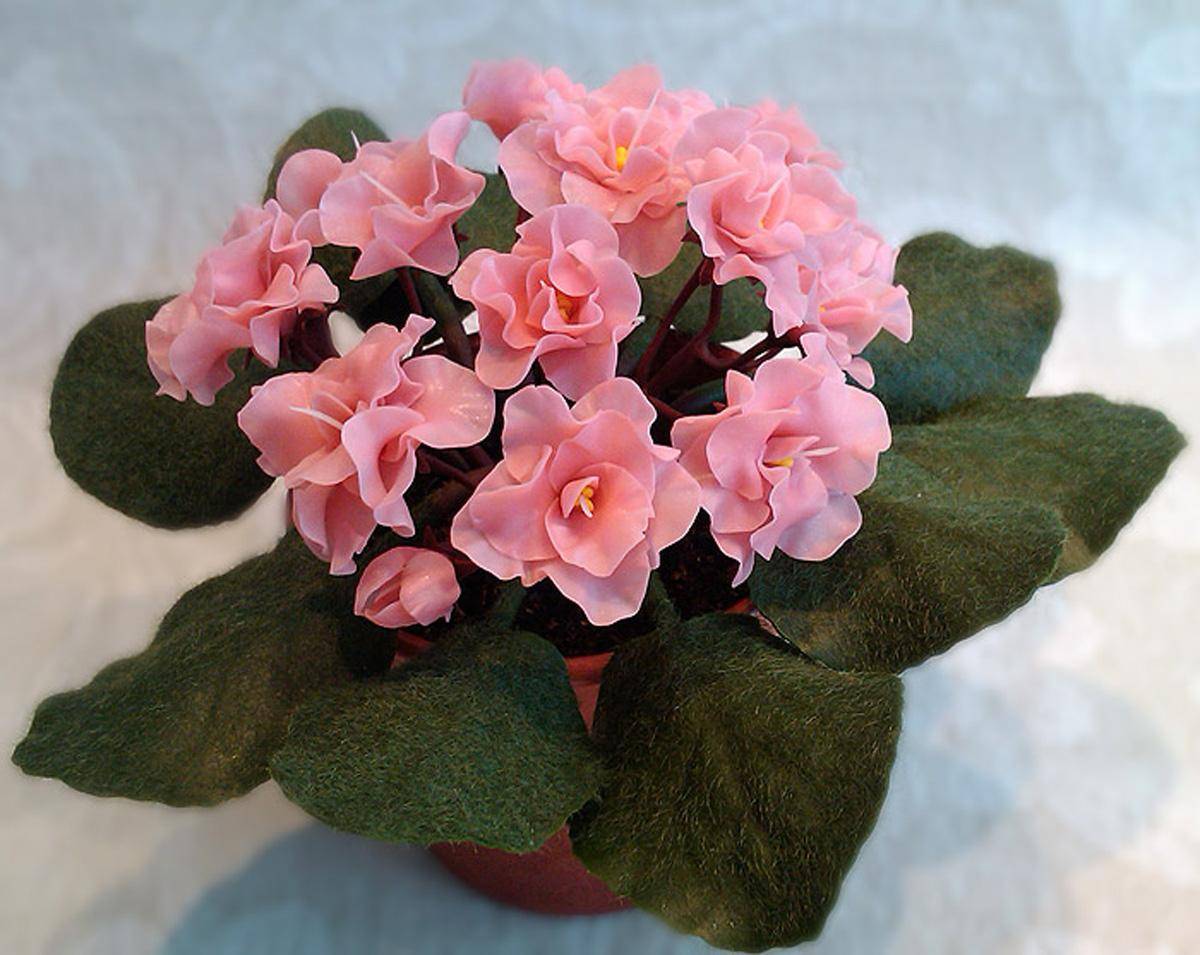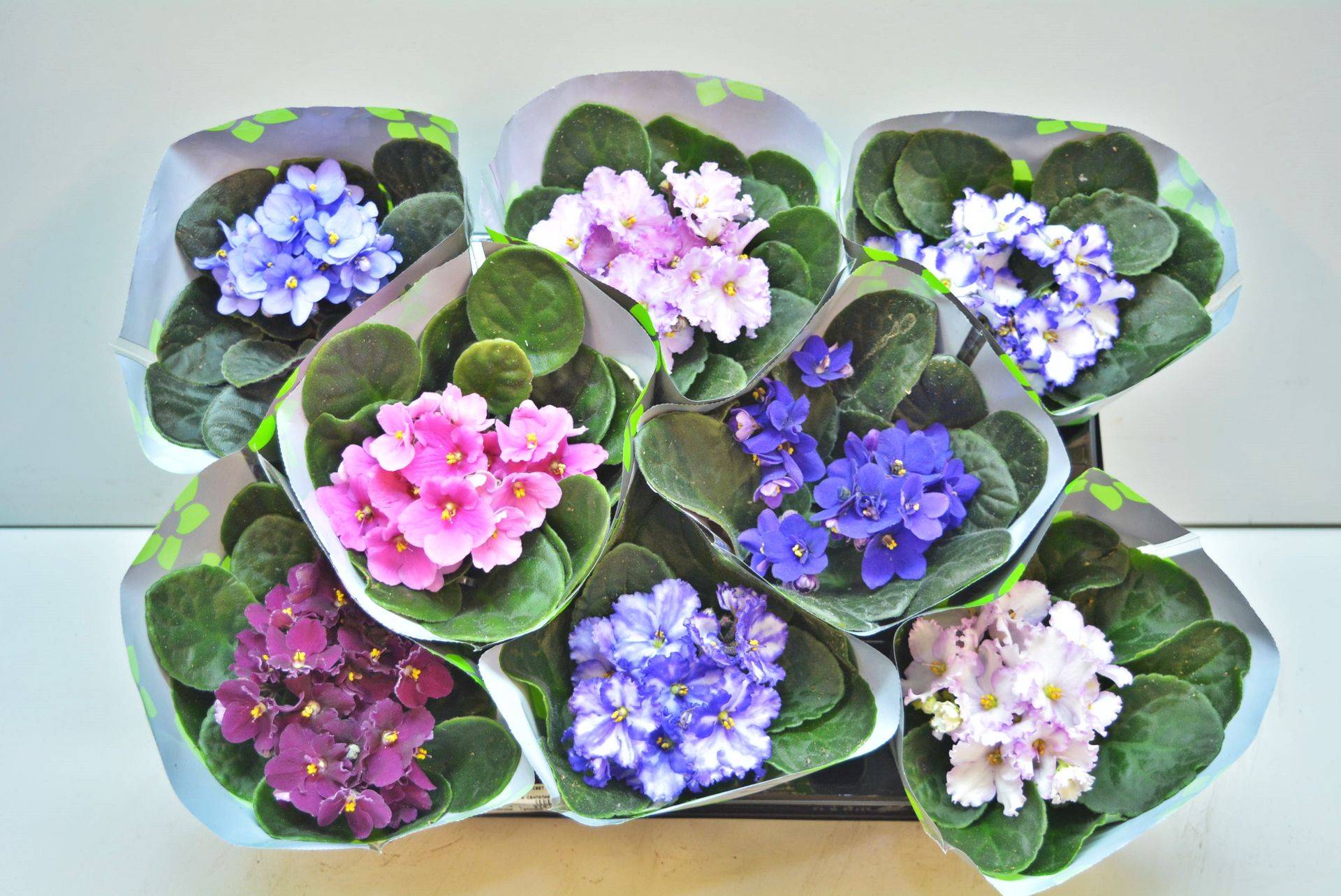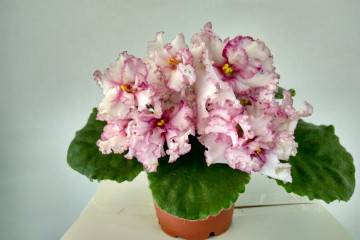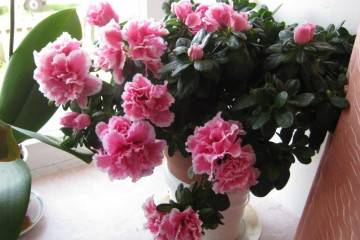Violet - home care for a flower
Content:
The violet is very popular with most flower growers. This indoor flower has an attractive appearance, compactness and the ability to decorate any room. Taking care of these amazing plants is not difficult at all. If you provide them with proper care, they will delight their owner with spectacular flowers for a long time.
Briefly about the history of appearance
Indoor violets are perennial or annual herbaceous plants. The short stem has rosette leaves that can take the shape of a circle, oval or heart. The edges of the leaves can be either flat or wavy, depending on the plant variety.
Today, thanks to the labors of breeders, a large number of different varieties of violets have been bred. They differ from each other in size and color of flowers.
Africa is considered the birthplace of violets. In natural conditions, the flower can be found where there is a temperate climate.
The flower was first discovered in 1892 in East Africa. It was opened by Baron A. Saint-Paul. This significant event happened during his walk with his beloved. In 1893, its family was determined, and in the same year the amazing plant was presented at the exhibition.
Plant characteristic
Violet belongs to the Violet family. Perennial flowers grow in height from 15 to 40 cm. All varieties have an identical rhizome structure, which is thick and woody. In this case, the stems of the flower are always shortened. They grow very slowly, forming leaves located close to each other. The green of the flower can be either smooth or velvety.
Violet grains are used exclusively for flower propagation, and stems, leaves and flowers are also used for medicinal purposes. Today there are over 600 varieties of this plant. At the same time, only about 30 species are grown at home.
How to care for violets at home
Caring for violets does not cause any difficulties, as these are unpretentious flowers. The main thing is to provide them with certain conditions of detention.
What problems can you face
Growing a violet flower at home, novice florists may encounter certain problems. There are situations when light yellow spots appear on the leaves of a plant. The reason for such manifestations can be direct sunlight, which, when it hits the flower, causes burns. To fix the problem, you need to remove all burnt leaves and rearrange the flower in a place where the sun's rays will not fall on it.
When watering a flower with cold water, brown spots often appear on its leaves.You can cope with this problem by removing the damaged parts and providing the plant with warm, settled water.
When growing violet flowers, it happens that the plant does not bloom. The reason for this may be insufficient lighting, non-compliance with the temperature regime, or too frequent transplantation.
Complexity of character
Despite the fact that many experienced flower growers speak of violets as unpretentious plants, each variety has its own characteristics. When grown, in order for a flower to look attractive and delight with lush flowering, it must provide certain conditions.
Violet: home care
All experienced flower growers know how to care for violets. As practice shows, questions arise only at the initial stage. To provide a home violet with proper care, you need to have certain knowledge and skills, as well as a little experience that can be acquired over time.
Temperature
Home care involves finding the flower in certain temperature conditions. In summer, the most comfortable temperature for violets is considered to be in the range from 20 ° C to 24 ° C. In autumn and winter, the indicators should not fall below 18 ° C.
Lighting
Experts recommend putting Saintpaulia in a well-lit place. At the same time, it is not recommended to allow direct sunlight to fall on the flower. It is also undesirable for plant leaves to touch the glass. If the daylight hours are less than 15 hours, then it is required to provide the flower with additional lighting.
Place in the apartment
The most optimal place for finding violets is considered to be the east or west side of the house. When placed on windowsills facing the south, it is recommended to shade the plant so that direct sunlight does not burn the leaves.
Watering
When growing indoor violets, home care should mean proper watering. Water the flower three times a week. In this case, it is imperative to take into account the season, soil characteristics and humidity. In summer, the soil dries out faster, so the flower needs to be watered as it dries. In winter, the amount of watering is reduced. Too frequent and abundant watering can negatively affect the condition of the flower.
For irrigation it is necessary to use only settled, thawed or filtered warm water.
Spraying
When growing violets, every florist should know that the plant does not tolerate the ingress of water on flowers and leaves. This can cause stains and rotting of the outlet. That is why it is strictly forbidden to spray the violet. You can spray the plant only with special means when the flower is damaged by pests or some diseases.
Humidity
In order for the violet, or as it is also popularly called, Saintpaulia, to feel comfortable, the plant must provide an optimal level of humidity. It is recommended to maintain it within 50%. To do this, in winter, it is enough to hang a damp towel on the battery.
Priming
The root system of the violet, according to the description of the flower, is delicate and superficial. In this regard, the soil for growing flowers must be selected especially carefully. Experts recommend growing violets in light, loose and breathable soil. The flower begins to die, as a rule, in heavy clay soil.
To grow beautiful Saintpaulia, experienced gardeners recommend adding a little crushed charcoal to a pot of soil when planting. So you can protect the roots of the plant from root rot. For drainage, small expanded clay or foam balls are poured onto the bottom of the container.
Top dressing
Many novice flower growers do not know how to care for it to bloom when growing a violet. And the secret is simple - you need to feed Saintpaulia. The flower needs phosphorus-potassium fertilization.
Features of caring for street and wild varieties
Once you have planted a garden violet on your garden plot, you can admire its beauty for a long time. But for this, the flower must be provided with certain conditions.
Since most garden violets are cold-resistant, there are no problems during cultivation. Lighting is selected depending on the type. Otherwise, the care is exactly the same as when growing flowers at home.
Features of caring for unusual varieties
When growing unusual varieties of violets, caring for them is practically the same. The only caveat is the lighting, which is selected depending on the variety.
Violet care depending on the season
Violet care in summer, autumn and spring is standard, the flower has no specific features. But with the arrival of winter, certain actions are required.
First of all, care should be taken to ensure that the plant receives the right amount of light. The flower will feel best if it is transferred to the side of the house where the sun is shining. In addition, air temperature and humidity should be closely monitored throughout the winter.
Preparing plants for planting and transplanting
Planting and transplanting violets should be performed with a complete replacement of soil. Despite regular feeding, the soil is still depleted, and the flower does not receive from it the substances it needs in full.
Before transplanting and seating, you need to do the following:
- Tilt the pot and rotate the plant.
- Try to get the bush together with the soil.
- Clean the roots of old soil and carefully examine the violet, especially in the middle.
- Remove dry leaves and rotten roots.
- Rinse the new pot thoroughly and lay a drainage layer in it.
- Fill up the prepared soil and plant a plant in it.
- Leave the flower for a day, and then it can be watered for the first time.
Caring for a young plant is no different. The flower needs to be provided with all the same conditions as for all other violets.
Pest Control Prevention
Even a novice florist can easily notice the presence of disease or parasites on a violet. If a flower does not bloom for a longer period of its life, then this is a sign of an illness or disturbance in care. The main thing is to immediately identify the cause and start treatment.
After an illness, flower recovery is very slow, so you should not hope for a quick result. You need to do everything right, and then after a certain time the flower will be able to please again with a beautiful appearance. During recovery, it is required to carefully monitor air humidity and watering.
Everyone has seen an amazing flower called violet at least once in his life. It is he who is considered by many to be a symbol of peace, constancy and eternal love. He is able to decorate any home. In addition, the violet is often used for medicinal purposes. With its help, they get rid of problems with the skin, kidneys and lungs. It is not difficult to grow it, you just need to adhere to the simple rules described above.
